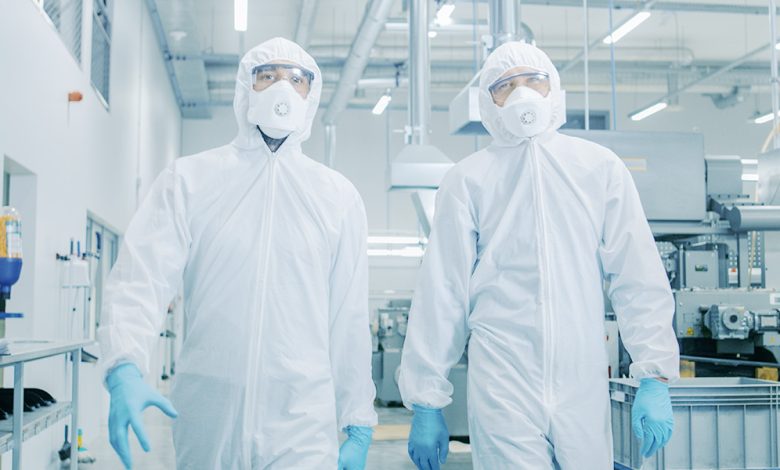Clean Room for Medical Devices Built for Safe, Reliable Manufacturing Results

Clean room for medical devices represents one of humanity’s most audacious attempts to defy nature itself, creating islands of purity in a world teeming with invisible life. These extraordinary spaces, where the air is filtered dozens of times per hour and every surface gleams with antiseptic perfection, have become essential infrastructure in our modern medical landscape. Yet for all their technological sophistication, they serve a purpose both ancient and profound: protecting the vulnerable from harm.
The Invisible Enemy
We live in what microbiologists sometimes call a “microbial world.” Bacteria, viruses, fungi, and countless other microscopic organisms outnumber us by orders of magnitude. They coat every surface, float through every breath of air, and colonise every corner of our environment. For most of human history, we remained blissfully unaware of this invisible kingdom. Today, we understand all too well the dangers these organisms pose, particularly when medical devices breach the body’s natural defences.
Consider the mathematics of contamination. A single bacterium, under ideal conditions, can multiply into more than eight million organisms within 24 hours. When such contamination occurs on a surgical implant or catheter, the consequences can prove catastrophic. Infections associated with contaminated medical devices kill thousands of people annually and cost healthcare systems billions in treatment expenses.
Building Barriers Against Nature
The architecture of a Clean room for medical devices reflects a siege mentality, constructed on the assumption that contamination constantly seeks entry. Engineers design these spaces with redundant systems and fail-safes that would seem paranoid in any other context. Singapore’s clean room for medical devices sector has particularly embraced this philosophy, developing facilities that achieve contamination control through layers of overlapping protections.
The air handling system forms the first line of defence. Outside air, laden with particles and microorganisms, passes through multiple stages of filtration. Pre-filters capture larger debris. High-efficiency particulate air filters remove particles down to 0.3 microns. In the most critical areas, ultra-low particulate air filters provide even greater protection. The result resembles air stripped of almost everything except its basic molecular components.
Yet filtration alone proves insufficient. The system maintains positive pressure relative to surrounding areas, creating an invisible barrier that pushes outward. Should someone open a door, air flows from the clean space into the corridor, never the reverse. This principle, simple in concept but demanding in execution, prevents the casual intrusion of contamination.
The Classification Hierarchy
Regulatory bodies have established a precise taxonomy for clean rooms, each classification denoting specific particle count limits:
ISO Class 3
The most stringent standard, permitting only 35 particles per cubic metre (0.5 microns or larger)
ISO Class 5
Used for critical device assembly, allowing 3,520 particles per cubic metre
ISO Class 7
Suitable for many manufacturing processes, with a limit of 352,000 particles
ISO Class 8
Often used for preparatory areas, permitting 3,520,000 particles per cubic metre
These numbers, whilst abstract, translate into real-world outcomes. Research consistently demonstrates that devices manufactured in higher-class (lower particle count) environments show dramatically reduced infection rates when used in clinical settings.
The Human Paradox
Here lies an irony that would amuse a novelist: the greatest threat to cleanliness in a clean room for medical devices comes from the very people working to maintain that cleanliness. Humans shed approximately 30,000 to 40,000 skin cells every hour. We exhale moisture laden with microorganisms. Our movements generate air currents that disturb settled particles. We are, in essence, walking contamination factories.
Singapore’s Clean room for medical devices industry has invested heavily in training programmes that teach personnel to work against their nature. Operators learn to move deliberately, avoiding sudden gestures. They master the complex choreography of gowning, a process that can take ten minutes or more when performed correctly. The garments themselves represent marvels of engineering: materials that breathe enough for comfort yet trap particles with ruthless efficiency.
The protocols extend beyond physical technique. Workers must cultivate a mindset of perpetual vigilance, questioning every action’s potential impact on cleanliness. This psychological dimension often proves more challenging than the physical requirements.
Validation and the Burden of Proof
Establishing a clean room for medical devices requires more than construction and equipment installation. Regulators demand extensive validation demonstrating that the facility performs as designed under all anticipated conditions. This process involves:
- Particle count testing at multiple locations and operational states
- Air flow visualisation studies to identify dead zones or turbulent areas
- Filter integrity testing to ensure no leaks compromise performance
- Recovery testing to determine how quickly the room returns to specification after disturbance
- Microbial monitoring to detect living organisms that particle counters might miss
These tests generate mountains of data that must be analysed, documented, and presented to regulatory authorities. Singapore’s Health Sciences Authority maintains particularly rigorous standards, requiring detailed validation protocols that often exceed international minimums.
The Cost of Certainty
Operating a clean room for medical devices demands substantial ongoing investment. Energy consumption alone can prove staggering, as air handling systems run continuously, conditioning and filtering air at rates that would bankrupt most facilities. Replacement filters, monitoring equipment, validation studies, and trained personnel all contribute to operational costs that can reach millions annually.
Yet these expenditures purchase something invaluable: confidence. When a surgeon implants a device manufactured in a properly controlled environment, both doctor and patient can trust that contamination has been minimised to the greatest extent possible. That assurance, built upon engineering excellence and operational discipline, justifies every pound spent on maintaining these remarkable spaces.
The future of medical device manufacturing depends absolutely on our ability to create and maintain environments that resist nature’s relentless push towards disorder. As devices become more sophisticated and healthcare demands grow globally, the importance of properly designed facilities only increases. Our health, quite literally, depends on the integrity of a Clean room for medical devices.
